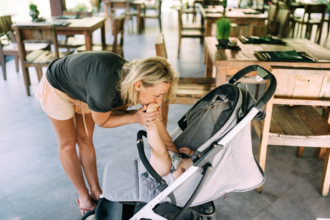As a roofing expert, you know that safety should always be the top priority on any worksite. One of the most significant risks in the construction industry is falling from a height, which makes fall prevention systems an essential safety measure. In this piece, we will go over what fall prevention systems are and how they work to keep workers safe.
Working on the roof can be especially risky, with the potential for falls resulting in serious injuries or even fatalities. As roofing experts who work on worksites, it is your priority to ensure the safety of your workers while on the job. One solution to increase worker safety is implementing fall prevention systems. In this blog post, we’ll cover the basics of fall prevention systems, what types are available and how they work.
What are Fall Prevention Systems?
Fall prevention systems are a set of measures, equipment, or technologies designed to prevent fall accidents in the workplace. Their main function is to provide a safe working environment by reducing the risk of falls from heights. These systems are essential for any worksite with elevations, such as roofs, towers, and scaffolds. They work by creating a barrier that prevents workers from accessing the edge of a roof or other elevated surfaces. Even if a worker slips or loses their footing, the fall prevention system will prevent them from falling to the ground.
How Do They Work?
Fall prevention systems are essential for roofing experts working on elevated worksites. They provide the necessary safety precautions to prevent falls, keeping workers safe. As an industry professional, you must understand how fall prevention systems work and how to set them up properly. Different fall prevention systems work differently, and below we will delve into several types of fall prevention systems and how they operate;
Guardrails
Guardrails are the most common fall prevention system used in the roofing industry. They consist of a protective barrier installed around the edge of a roof or other elevated surface. Guardrails are made from various materials, including metal, plastic, and wood. They can also be permanent or temporary, depending on the worksite’s needs.
Safety Nets
Fall Safety Netting is another fall prevention system that can protect workers from falls. They create a surface that a worker will land on if they fall. Safety nets typically consist of high-strength fibers woven into a mesh pattern. When properly installed, safety nets can catch workers who fall and prevent them from hitting the ground.
Anchor Points
Anchor points are used to secure workers’ personal protective equipment (PPE) to prevent falls. Anchor points are usually connected to a worker’s harness, worn like a safety belt. The anchor point is attached to a secure structure that can support a person’s weight if they fall. When a worker is attached to an anchor point, the PPE will prevent them from falling.
Personal Protective Equipment
Personal protective equipment (PPE) is the last defense against falls. PPE includes a full-body harness, lanyard, and other equipment that protects a worker in case of a fall. Workers must wear PPE at all times when working at height, and it must be correctly fitted and adjusted to provide the necessary protection.
Conclusion
In conclusion, fall prevention systems are essential to the safety of workers on any worksite. They work by creating a barrier that prevents falls from occurring in the first place or protecting workers if they do fall. As a roofing expert, you are responsible for ensuring that fall prevention systems are installed and used correctly on all worksites to protect workers from the hazards associated with working at height.















